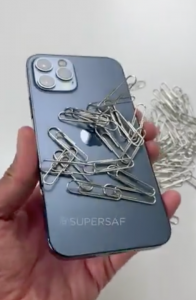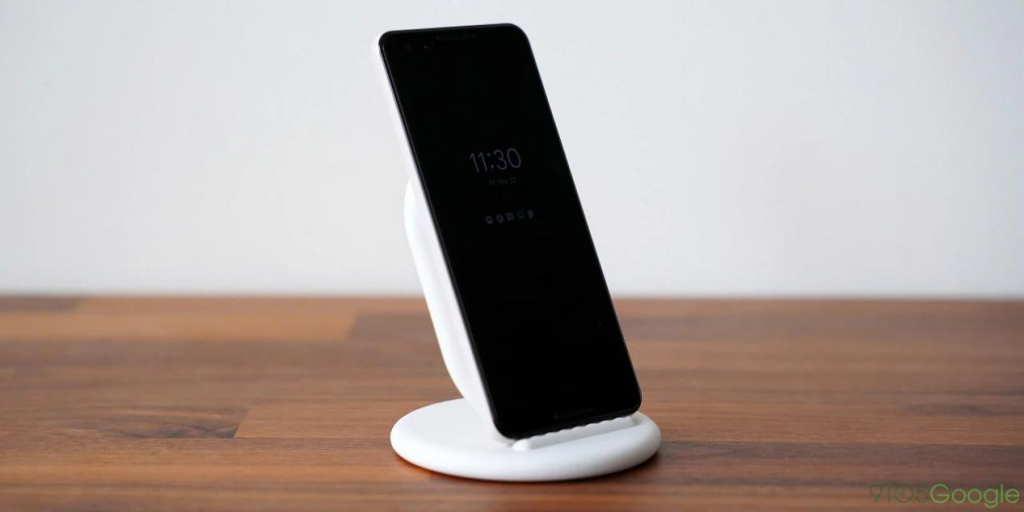
I didn’t buy the MagSafe wireless charger, but many netizens said that MagSafe charging is slow, and the more it charges, the less. I guess this may be because the new phone has just been set up, especially when recovering data from the old iPhone, especially when the amount of data is still large, it causes more background activities and consumes more power. Of course, this also shows that MagSafe’s charging power is not high. If it is really 15W, it will not charge less.
I have also seen many users say that although MagSafe will not charge less, it is really slow and easy to heat. I saw a post on Apple’s official forum, and it took at least 30 minutes to charge from 61% to 64%. 30+ users said they had the same problem. I wonder if it is caused by battery overheating? Apple officially stated that if the battery heats up and the charge exceeds 80%, the iOS system will limit its charging, so some users find that MagSafe has been charged for a long time and is not full.
After reading some review articles, I think MagSafe is not so slow under normal circumstances. The Verge stated that MagSafe can be charged from 0% to about 40% in one hour, and the WSJ tested and showed it can be charged from 0% to 50% in one hour. MobileReviewsEh tested 5 wireless chargers, and the results showed that MagSafe was the fastest of these five.
But, these data only apply to the iPhone 12 series, because the comments and data I have seen indicate that MagSafe charges the old iPhone very, very slowly!
MobileReviewsEh’s test results show that with Apple’s 20W charging head, MagSafe takes nearly 4 hours to charge iPhone 11 from 50% to 80%. It is far behind the other 4 wireless chargers. Max Yuryev used MagSafe with Apple’s 20W charging head to charge iPhone SE 2, with a power as low as 1.83W.
Apple’s official website stated that MagSafe wireless chargers are compatible with the Qi standard and can charge all iPhones that support wireless charging, but MagSafe’s charging speed for old iPhones seems to be much lower than even 5W third-party wireless chargers. What the hell?
Low efficiency of Wireless charging
Apple cancelled the charging head and added MagSafe charging technology for environmental protection reasons. There are rumors that at least one series of iPhone will cancel the charging interface next year and fully embrace wireless technology.
However, data shows that wireless charging is less environmentally friendly than wired charging.
Debugger did a test with Google Pixel 4. Charged from 0% to 100%, wired charging uses 14.26Wh of power. Testing data from multiple wireless chargers shows that the average power consumption is 21.01Wh, which is 0.02101 kWh, which consumes 47% more than wired charging. This 47% of the power is wasted. The power that has not entered the battery of the mobile phone will become heat and emit.
Debugger also found, if the charger coil is not aligned with the mobile phone coil, power consumption may increase significantly. Use Google Pixel Stand wireless charging to charge Pixel 4. This charger can reduce the gap between the coils. The power consumption is 19.8Wh, which is 39% more than wired charging.

The strange thing is that MagSafe uses magnets to align the coils, which should improve the charging efficiency, but why do many netizens report that MagSafe heats up?
In addition to low efficiency, wireless chargers consume power even when in standby. The result of the Debugger test shows that the 24-hour standby power consumption for wireless charging is 6Wh, and that for wired charging is 0Wh.
5 messages of MagSafe
Finally, share a few pieces of information about MagSafe.
The magnet on the back of the iPhone 12 can attract magnetic materials such as paper clips, but the magnetic force is weak. It is impossible to hold the iPhone on the refrigerator, but the magnetism may demagnetize some cards. Be careful not to put them together;

- The data of the core movement test shows that the magnetic force of the iPhone 12 Pro, MagSafe charger, and MagSafe mobile phone case are 57 Gauss, 123 Gauss, and 16 Gauss respectively. These magnetisms may cause inaccurate timing of some mechanical watches;
3. The MagSafe on the back of the iPhone 12 has an NFC chip, which is used to determine the information of a MagSafe accessory, for example, it can identify the color of the MagSafe phone case;

- The NFC chip seems to be also used to determine whether a charger is MagSafe compatible. However, someone in Shenzhen has cracked the MagSafe wireless charger. I believe there will soon be third-party wireless chargers listed that are not MFi certified but compatible with MagSafe charging standards.
5.The charging head net test shows that putting a coin/key and other metal objects on Apple’s official MagSafe charger will cause the charger to heat up, so please avoid it.
Comments